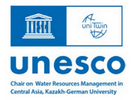



Year: 2024
Collections: Scientific Publications
Topics: Energy
Authors: Hans Holzhacker, Botagoz Rakisheva
Countries: Kyrgyzstan, Uzbekistan, Tajikistan
Source: Central Asian Journal of Sustainability and Climate Research
In July-August, 2023, CAREC Institute, Public Opinion Research Institute, and Asian Development Bank Institute conducted a sociological survey on household energy use in the Fergana Valley spanning over the Kyrgyz Republic, Tajikistan, and Uzbekistan. The following article uses the data from that survey for investigating what determines the choice of different energy types for heating. The article concludes that high household expenditures for coal and high awareness of the harm fossil fuels can inflict on the environment and family health are insufficient to trigger a large-scale shift towards cleaner energy. To motivate households for such a shift a substantial increase in fossil fuel prices compared to electricity and other clean energy is required. This might call for a sales tax on coal. However, energy expenditure already accounts for up to one-third of household income. Low- and middle-income households would need to be compensated for increased energy spending to avoid social hardship and a backlash against such a tax.
Year: 2024
Collections: Scientific Publications
Topics: Climate, Energy
Authors: Sergey Vassilyev, Galym Iskakov
Countries: Kazakhstan
Source: Central Asian Journal of Sustainability and Climate Research
The study aimed to evaluate the economic and financial viability of a coal mine methane (CMM) utilization project in Central Kazakhstan, demonstrating a methodology for similar initiatives. The analysis was based on the 2013 project proposed by the US Environmen-tal Protection Agency (EPA) that intended to capture methane emissions from six coal mines for electricity generation, yet was never implemented. The study’s relevance stems from Kazakhstan's 2030 methane pledge, recent progress in the country's climate change-related policy, mineworker mortality in 2023, and the shift of mines ownership. Building upon the technical specifications of the 2013 US EPA project, this research em-ployed standard financial and economic cost-benefit analysis (CBA). The financial model utilized a traditional discounted free cash flow approach, while the economic model in-corporated additional factors like the value of statistical life (VSL), shadow pricing, as well as benefits associated with mitigating ozone health impacts, crop damage, mine ex-plosion risks, and CO2 emissions. The economic model has indicated a positive net pre-sent value of $243 mln and 42% internal rate of return. The financial analysis also sug-gests potential profitability under fair electricity and carbon pricing market conditions. To assess project robustness under varying economic and financial assumptions, the study included a sensitivity analysis. The research has likewise leveraged prior CMM-related studies in Kazakhstan and provides valuable guidance for analyzing similar projects. In addition, it also highlights the need for certain adjustments in the current legislation to incentivize such projects, as well as to promote environmental sustainability and social development by mitigating methane emissions, which aligns with Kazakhstan's climate goals.
Year: 2024
Collections: Policy Briefs
Topics: Energy
Authors: Кобзев Алексей, Мануэль Андреш, Абылайхан Солтанаев, Нурбек Есетов
Countries: Kazakhstan
Source:
Энергетический переход продолжается с беспрецедентной скоростью и масштабом, требуя новых технологий с низким уровнем выбросов углерода. Зеленый водород рассматривается как часть решения для достижения декарбонизации промышленности, что потребует согласованных действий со стороны промышленности и правительства для того, чтобы Казахстан смог получить выгоды.
Year: 2024
Collections: Policy Briefs
Topics: Energy
Authors: Kobzev A., Manuel Andresh, Abylaikhan Soltanayev, Nurbek Yessetov
Countries: Kazakhstan
Source:
Year: 2025
Collections: Scientific Publications
Topics: Water, Energy, Agriculture
Authors: Hamidov Ahmad, Bobocholov Asliddin, Sonoko Dorothea Bellingrath-Kimura
Countries: Uzbekistan
Source: water-ca.org
The water, energy, and food (WEF) nexus is being promoted as a conceptual idea for achieving sustainable development, that describes the interconnections and interdependencies between those three sectors. The main objective of this article is to operationalize the WEF nexus concept in lift-irrigated areas of Uzbekistan through involving local stakeholders, to investigate the WEF nexus within the lift-irrigated agriculture of the Kashkadarya region, an area heavily reliant on the Karshi Canal system. The study is grounded in the urgent need for sustainable development, with a focus on enhancing intersectoral cooperation between water, energy, and food sectors. A case study methodology was employed, incorporating semi-structured interviews with experts, alongside local farmers and scientists. Data were analysed using the qualitative analysis software, Atlas.ti. The results indicate significant challenges to intersectoral cooperation in the WEF nexus, including lack of trust, communication barriers, differing priorities, and insufficient political will. However, the findings also highlight the potential benefits of improved cooperation, such as enhanced resource efficiency, reduced operational costs, and mitigated risks from environmental stressors like drought. The study concludes that, according to stakeholders’ opinions, while the WEF nexus presents critical opportunities for advancing sustainable development in Uzbekistan, substantial barriers must be addressed to realize these benefits. Recommendations include promoting sustainable agriculture to reduce water dependency, improving energy security by diversifying energy sources, and raising awareness of the WEF nexus’s importance. Furthermore, fostering stronger stakeholder cooperation is crucial for achieving Uzbekistan’s Sustainable Development Goals (SDGs) by 2030.
For questions about cooperation, please contact us at: